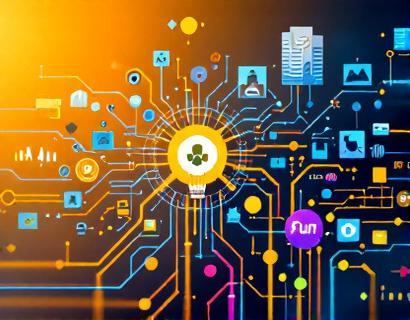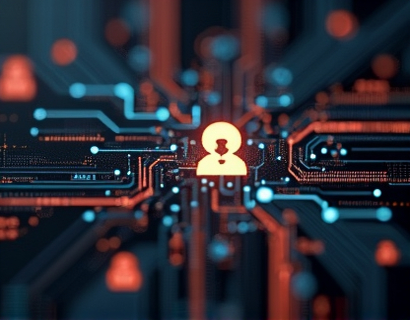Transforming Education with AI-Driven Chatbots: A Comprehensive Guide for Students, Families, and Educators
The integration of artificial intelligence in educational settings has opened new avenues for learning, providing tailored insights and support to students, families, and educators. Among these innovations, AI-driven educational chatbots stand out as a powerful tool, offering specialized knowledge and industry insights in a safe and interactive manner. This article delves into the capabilities and benefits of these chatbots, focusing on how they can enhance the educational experience for all users.
Understanding AI-Driven Educational Chatbots
AI-driven educational chatbots are sophisticated software applications designed to simulate conversation with human users through natural language processing. These chatbots leverage machine learning algorithms to understand and respond to user queries, providing relevant and accurate information. In the context of education, these chatbots are tailored to deliver content that is not only informative but also aligned with the curriculum and industry standards.
Specialized Insights for Students
For students, AI chatbots serve as personal tutors and guides, offering support beyond the traditional classroom setting. These chatbots can provide explanations of complex concepts, answer homework questions, and even assist with project research. The specialized nature of the content ensures that students receive accurate and up-to-date information, which is crucial for their academic success. Moreover, the interactive format makes learning more engaging and accessible, catering to different learning styles and needs.
Enhanced Learning Experience
The learning experience is significantly enhanced through the use of AI chatbots. Students can interact with the chatbot at any time, receiving immediate feedback and guidance. This 24/7 availability ensures that learners are never alone in their educational journey. Additionally, the chatbot can adapt to the student's progress, offering more challenging material as the student advances, or providing additional support when needed.
Family Involvement and Support
AI chatbots also play a vital role in involving families in the educational process. Parents and guardians can use these chatbots to stay informed about their child's progress, understand the curriculum, and find resources to support learning at home. The chatbot can provide insights into best practices for homework help, tips for fostering a conducive learning environment, and even suggest activities that reinforce classroom learning.
Building a Stronger School-Community Connection
By facilitating communication between educators and families, AI chatbots help build a stronger school-community connection. Teachers can use the chatbot to send updates, share important notices, and provide resources that complement classroom learning. This continuous flow of information ensures that families are well-informed and can actively participate in their child's education, leading to better academic outcomes and a more supportive learning environment.
Educator Resources and Professional Development
For educators, AI chatbots are invaluable tools for professional development and resource management. These chatbots can offer access to the latest educational research, teaching strategies, and industry trends. Educators can ask specific questions about lesson planning, classroom management, and student assessment, receiving tailored advice and examples. The chatbot can also serve as a platform for connecting educators with peers and experts, fostering a community of continuous learning and improvement.
Streamlining Administrative Tasks
Beyond educational content, AI chatbots can assist educators with administrative tasks, such as scheduling, attendance tracking, and student feedback collection. By automating these tasks, chatbots free up valuable time for teachers to focus on what matters most—teaching and mentoring students. This efficiency not only reduces stress but also enhances the overall quality of education.
Ensuring Safety and Verified Content
One of the most significant advantages of AI-driven educational chatbots is their commitment to providing a safe and educational experience. Content verification is a critical feature, ensuring that all information provided to users is accurate, up-to-date, and sourced from reliable databases. This is particularly important in an educational context, where misinformation can have detrimental effects on learning.
Child-Friendly Interface
Recognizing the need for safety, especially for younger users, these chatbots are designed with a child-friendly interface. The language used is simple and age-appropriate, and the chatbot is programmed to avoid any inappropriate content or interactions. This makes the platform suitable for children of all ages, allowing them to explore and learn in a secure environment.
Industry Services and Knowledge
AI chatbots can also serve as a gateway to understanding various industry services and knowledge areas. For students and educators interested in specific fields, such as technology, healthcare, or the arts, the chatbot can provide detailed insights and resources. This includes information on career paths, required skills, and current industry trends, helping users make informed decisions about their educational and professional futures.
Personalized Career Guidance
By leveraging data and machine learning, AI chatbots can offer personalized career guidance. Users can input their interests, skills, and educational background, and the chatbot can suggest potential career paths and relevant courses or programs. This personalized approach ensures that users receive tailored advice that aligns with their unique strengths and aspirations.
Interactive Learning Tools
Beyond providing information, AI chatbots can integrate interactive learning tools to enhance the educational experience. These tools may include quizzes, interactive simulations, and gamified learning activities. Such features not only make learning more engaging but also help reinforce understanding through active participation. Educators can also use these tools to create dynamic and interactive lessons, catering to diverse learning preferences.
Real-Time Feedback and Assessment
Real-time feedback is another key benefit of AI chatbots in education. Students can receive immediate feedback on their answers and performance, allowing them to identify areas for improvement and track their progress over time. This instant feedback loop is invaluable for both students and educators, as it facilitates timely interventions and adjustments to teaching strategies.
Challenges and Considerations
While AI-driven educational chatbots offer numerous benefits, it is essential to consider potential challenges and limitations. One major concern is the accuracy and bias of the content provided. To mitigate this, continuous monitoring and updating of the chatbot's knowledge base are necessary. Additionally, while chatbots can simulate conversation, they lack the emotional intelligence and empathy of human educators, which are crucial in certain educational contexts.
Balancing Technology and Human Interaction
To maximize the effectiveness of AI chatbots in education, it is important to strike a balance between technology and human interaction. Chatbots should complement, not replace, the role of teachers and educators. Human oversight ensures that the content remains relevant, accurate, and emotionally supportive. Moreover, human interaction provides the nuanced guidance and mentorship that are essential for holistic development.
Future Prospects
The future of AI-driven educational chatbots looks promising, with ongoing advancements in AI technology and increasing adoption in educational institutions. As these chatbots become more sophisticated, they will likely offer even more personalized and interactive learning experiences. The integration of augmented reality, virtual reality, and other emerging technologies could further enhance the educational potential of chatbots, making learning more immersive and effective.
Conclusion
AI-driven educational chatbots represent a significant leap forward in educational technology, offering specialized insights and support to students, families, and educators. By providing verified content, ensuring safety, and enhancing the learning experience, these chatbots play a crucial role in shaping the future of education. As the technology continues to evolve, the potential for innovative and impactful educational solutions grows, promising a brighter and more inclusive learning landscape for all.











































